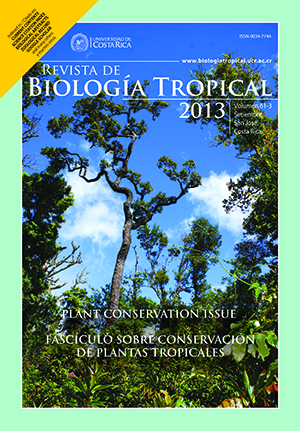Resumen
The spatial distribution of individuals is a fundamental property of most species and constitutes essential information for the development of restoration and conservation strategies, especially for endangered plant species. In this paper we describe the spatial distribution of different size classes of the endangered tropical tree Guaiacum sanctum and the effect of canopy cover on spatial aggregation. Adult G. sanctum were located and mapped in a 50ha plot in Palo Verde National Park, Costa Rica. Seedlings, saplings and juveniles were mapped to the nearest centimetre and permanently marked in three 50x50m subplots. Within each subplot spatial aggregation was assessed using Ripley’s K statistic and canopy opening readings were performed every 5m using a densitometer. Kriging spatial interpolation and Monte Carlo simulations were used to determine if average canopy cover differed among size classes. Individuals of G. sanctum were spatially aggregated at all size classes with seedlings being the most frequent size class in all subplots. Seedlings were found predominantly in areas with significantly higher canopy cover. In contrast, juveniles were more likely found in areas with higher light availability. The high number of seedlings, saplings, and juveniles relative to adults suggests that populations of G. sanctum in PVNP are expanding. Light availability and canopy structure are important factors shaping the spatial distribution of this species. The contemporary demographic structure of G. sanctum is dependent on forest gap dynamics and changes in human disturbance during the past 25 years.##plugins.facebook.comentarios##
Descargas
Los datos de descargas todavía no están disponibles.






